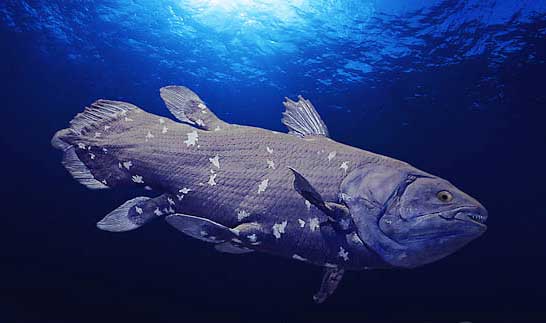Coelacanths: Lost and Found
I'm sure you've heard about some cases when a person was declared dead and then was found weeks, months or years later, alive and well. Well, that's the case with coelacanths (order Coelacanthiformes), too, but people actually thought they went extinct about 66 MILLION years ago! We now celebrate 407 million years of their existence.
Two species of latimerias are now know to be extant: Latimeria chalumnae and Latimeria menadoensis, the latter having been discovered much laterthan the first. While L. chalumnae (discovered 1938), or the West Indian Ocean coelacanth, is critically endangered, L. menadoensis (discovered 1999), or the Indonesian coelacanth, is listed as vulnerable.
Coelacanths follow a very old lineage of lobe-finned fish, and are thus more closely related to lungfish, reptiles or, gosh, even mammals than to some ray-finned fishes, which are the most common fish (about 99%). A 2004 study, however, concluded, that lungfish are closer relatives of tetrapods than the coelacanths.
Let's talk about L. chalumnae.
It's a very interesting species indeed: its mouth has an intracranial joint, which is hinged and thus allows for an extraordinarily wide bite. It swims in an odd fashion, moving its fleshy fins in an alternating pattern, making it look as if it was crawling on land... without touching the ground.
The species has what we call vestigial lungs. Embryos start growing lungs (the gestation period takes up to 3 years), which later stop developing and serve no known purpose in later life. These guys have a tiny brain that takes up less than 2% of the cranial cavity - the rest is filled with fat.
It's getting more and more apparent that a large brain is not the key for survival.

Photo credit: L. chalumnae by Zoo Firma
| Common name: | West Indian Ocean & Indonesian coelacanth |
| Scientific name: | Latimeria chalumnae Latimeria menadoensis |
| Phylum: | Chordata |
| Class: | Coelacanthiformes |
| Order: | Latimeridae |
| IUCN status: | Critically endangered
Vulnerable |
| Population trend: | Unknown |
| Scientific reading: |